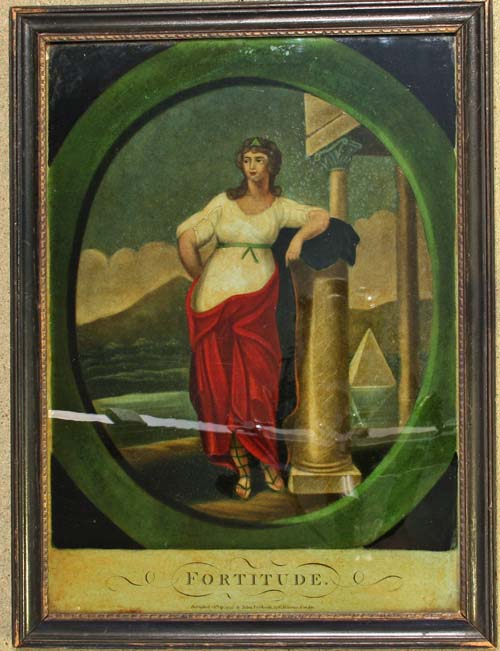| Usually, Fortitude is a large earthenware lady--about 23 inches tall. She stands stoically beside a broken column that symbolizes Fortitude's strength. The figure is found in much the same style in engravings of the period, as you see alongside, but the most well-known marble of Fortitude is in St. Peter's Basilica, Rome, and it ---or a derivative plaster--seems to have inspired the earthenware model. |
And then something clicked in my brain....and I kicked myself hard for being so very stupid. Of course! This lady is not Fortitude. She is Liberty. The object she holds is not a column. Rather, it is a bundle of rods, Liberty's attribute.
After the abolition of the French monarchy, the Convention of 1792 decreed that a figure of Liberty should appear on the French Republic’s new Seal of State. Liberty is portrayed on the seal as a lady wearing a crown and holding fasces in her right hand to symbolize the power of the liberated people. In ancient Rome, fasces conveyed the power of Roman magistrates to punish. They comprised a bundle of birch rods tied into a cylinder with a leather ribbon. A depiction of Liberty—in print or figural form, as on the French Seal of State—probably inspired the earthenware figure.
Earthenware figures of Liberty are oh-so-rare. I know of only one other, the figure below in the V&A.
Who made these figures of Liberty? The Pook and Pook example was very probably made by Enoch Wood. That specific base form occurs again and again on figures with Enoch Wood attributes. As for the V& A example, I just don't know. I am intrigued by her elaborate dress pattern and have noted the same pattern on a few other classical figures...but, as yet, I can't draw any conclusions.




















